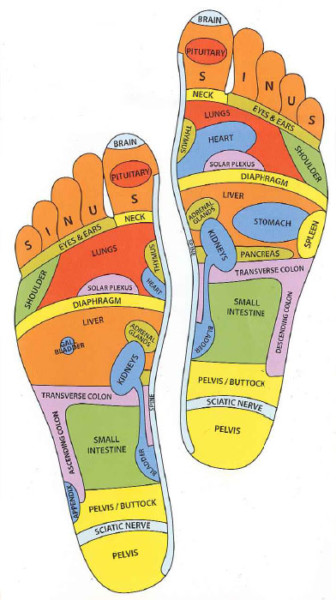What is reflexology?
Reflexology is a massage that involves different levels of pressure to be applied to feet, hands, and ears. It is based on the theory that these parts of the body are related to certain organ systems. Reflexologists believe that applying pressure to these parts offers a range of health benefits.
It is said that the procedure causes a soothing reaction, even alleviating other symptoms.
How does reflexology work?
Various parts of the body correlate with different body pressure points in Chinese medicine. In order to establish where pressure should be exerted, reflexologists use charts of the points in the feet, hands, and ears.
In the 1890s, British researchers found that the skin and internal organs are connected by nerves. Researchers also observed that the whole nervous system of the body appears to respond to external factors, including the touch. The touch of a reflexologist can help to relax the central nervous system, promote relaxation and other advantages, such as any massage.
Another conviction that some use is zone theory to explain how reflexology works. In this hypothesis, there were ten vertical areas in the body. That zone contains various parts of the body and fits the individual fingers and toes. Focusing on these fingers and toes allows practitioners of zone theory to touch any body part of a particular area.
Foot reflexology chart
A reflexological diagram or chart is a representation of the image on the left. The foot segment of the organ or part of the body is shown.
During the course, a reflexologist uses such a model. Reflexologists work on the hands or the ears to trigger relaxation, but the most common treatment is foot reflexology.

As you can see, any organ or device in the body occupies a spot on the diagram. A reflexologist may manage other parts of your body through the concentration on this foot area.
Benefits of reflexology
It is said that reflexology has many health benefits. Even though there is lack of enough evidence, recipients have reported the following benefits:
- Reduce stress and anxiety
- reducing the pain
- boost positivity and elevate the mood
- Improving your overall well-being.
- boost their immune system
- get over colds and bacterial infections
- clear up sinus issues
- recover from back problems
- correct hormonal imbalances
- boost fertility
- improve digestion
- ease arthritis pain
- treat nerve problems and numbness from cancer drugs (peripheral neuropathy)
Difference between foot massage and reflexology
Massage therapy is tissue handling, relaxing muscles, alleviating tension and improving the circulation. This can improve health and wellness overall.
On the other side, reflexology utilizes a precise, pressurized treatment to recover the energy flow across the whole body. The procedure typically centers on the foot, but, hands and ore can also be used.
Is reflexology safe?
For fact, even for people with severe health conditions, reflexology is very healthy. It’s non-invasive and convenient, so if you want to do it, it may be worth trying.
However, you should talk to your doctor first if you have any of the following health issues:
- circulatory problems in the feet
- blood clots or inflammation of your leg veins
- gout
- foot ulcers
- fungal infections, like athlete’s foot
- open wounds on your hands or feet
- thyroid problems
- epilepsy
- a low platelet count or other blood problems, which can make you bruise and bleed more easily
How much does a reflexology massage cost?
Like any spa treatment or massage therapy, prices vary from spa to spa for reflexology. In Himalayan Spa KTM, you will find more reasonable price competitive of many other spas in the Kathmandu. Click here for price and to book.
What is a reflexology session like?
Normally, the procedure lasts approximately 30 minutes, but it can take up to an hour. Speak to your reflexologist in preparation to answer issues such as constipation, anxiety or sleep problems.
You’re dressed and seated or lying down during the session. The therapist can massage the feet, push them and pinch them. To ease symptoms, the therapist may focus on particular areas. Of starters, he/ she’ll concentrate on your toes if you have sinus problems. But they can also operate on the whole foot to reinforce all of the body’s structures.
Important Things to Remember
- Wait at least 1 hour until your meal after the massage
- Reflexology may not be right for you if you are pregnant. Try a prenatal massage instead.
- Drink water after the massage to eliminate toxins and lactic acid buildup that occurs during the massage
- Consult a doctor first if you have foot problems, an injury or a blood vessel disease associated with clots or varicose veins


